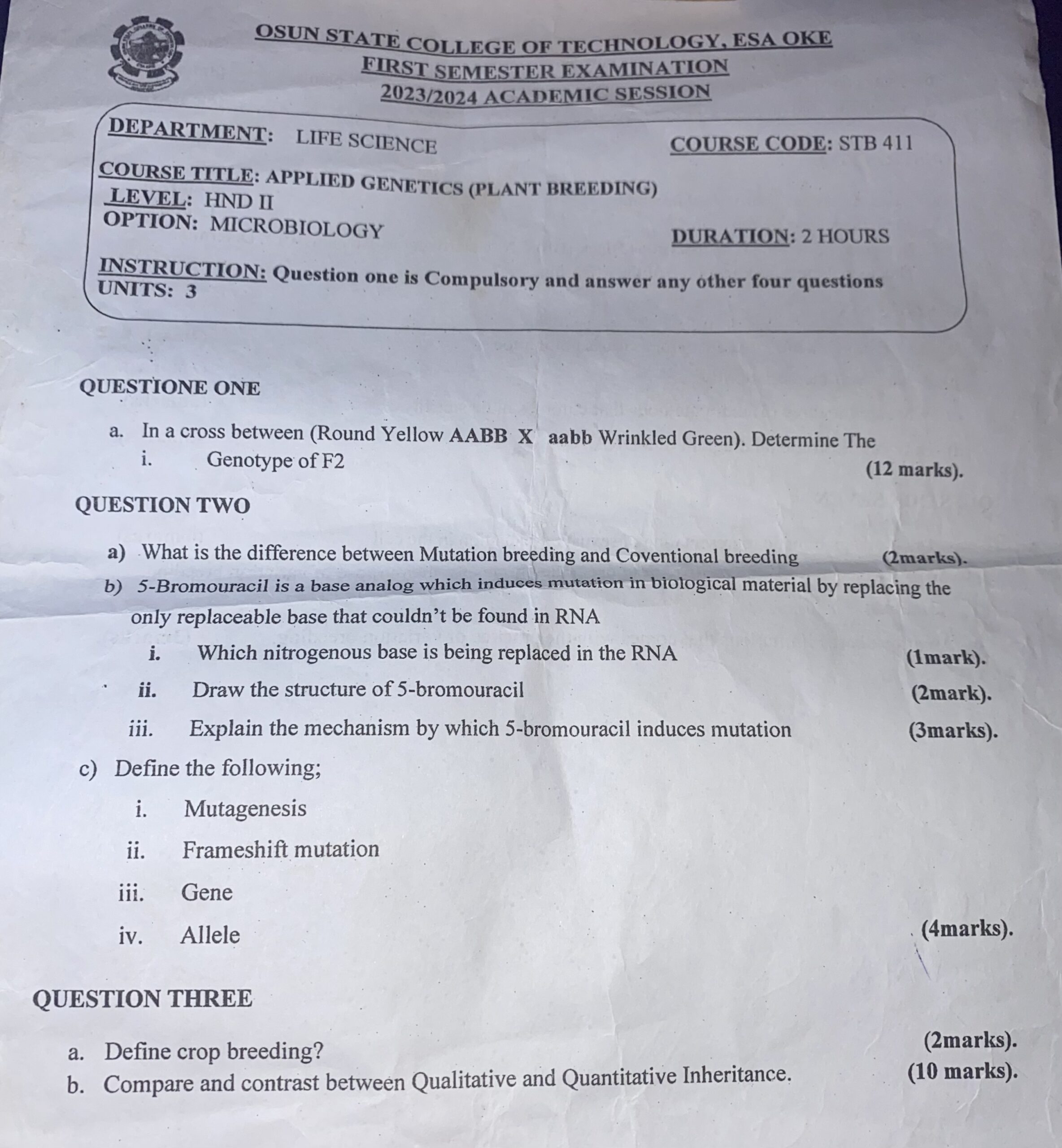Solutions
Q1.
a. In a cross between (Round Yellow AABB X aabb Wrinkled Green), determine the:
i. Genotype of F2:
The F1 generation from the cross AABB (Round Yellow) and aabb (Wrinkled Green) will have the genotype AaBb (Round Yellow). When F1 plants are self-crossed (AaBb X AaBb), the F2 generation will have the following genotypic ratio:
1 AABB : 2 AABb : 1 AAbb : 2 AaBB : 4 AaBb : 2 Aabb : 1 aaBB : 2 aaBb : 1 aabb
Q2.
a) The difference between Mutation breeding and Conventional breeding:
- Mutation breeding involves inducing mutations in plants using mutagens (chemicals or radiation) to create genetic variation, which is then selected for desirable traits.
- Conventional breeding involves the natural crossing of plants with desirable traits to produce offspring with combined favorable characteristics.
b) 5-Bromouracil is a base analog which induces mutation in biological material by replacing the only replaceable base that couldn’t be found in RNA:
i. The nitrogenous base being replaced in the RNA is thymine.
ii. The structure of 5-bromouracil is similar to thymine but with a bromine atom replacing the methyl group at the 5th position.
iii. The mechanism by which 5-bromouracil induces mutation is by being incorporated into DNA in place of thymine. During DNA replication, it can pair with guanine instead of adenine, leading to a base pair change from A-T to G-C, causing a mutation.
c) Define the following:
i. Mutagenesis: The process by which the genetic information of an organism is changed, resulting in a mutation.
ii. Frameshift mutation: A type of mutation caused by insertions or deletions of a number of nucleotides that is not a multiple of three, altering the reading frame of the gene.
iii. Gene: A segment of DNA that contains the instructions for the synthesis of a specific protein or functional RNA molecule.
iv. Allele: One of the alternative forms of a gene that can exist at a specific locus on a chromosome.
Q3.
a. Define crop breeding:
Crop breeding is the science of changing the traits of plants in order to produce desired characteristics. It involves selecting plants with desirable traits and crossing them to produce offspring with improved qualities such as higher yield, disease resistance, or better nutritional content.
b. Compare and contrast between Qualitative and Quantitative Inheritance:
- Qualitative Inheritance:
- Involves traits that are controlled by one or a few genes.
- Traits are typically discrete and can be easily categorized (e.g., flower color, seed shape).
- Phenotypic ratios in offspring can often be predicted using Mendelian genetics.
- Quantitative Inheritance:
- Involves traits that are controlled by multiple genes (polygenic inheritance).
- Traits are usually continuous and show a range of variation (e.g., height, weight).
- Phenotypic ratios are more complex and often follow a normal distribution curve.
Both types of inheritance are important in plant breeding, but they require different approaches for selection and improvement.


